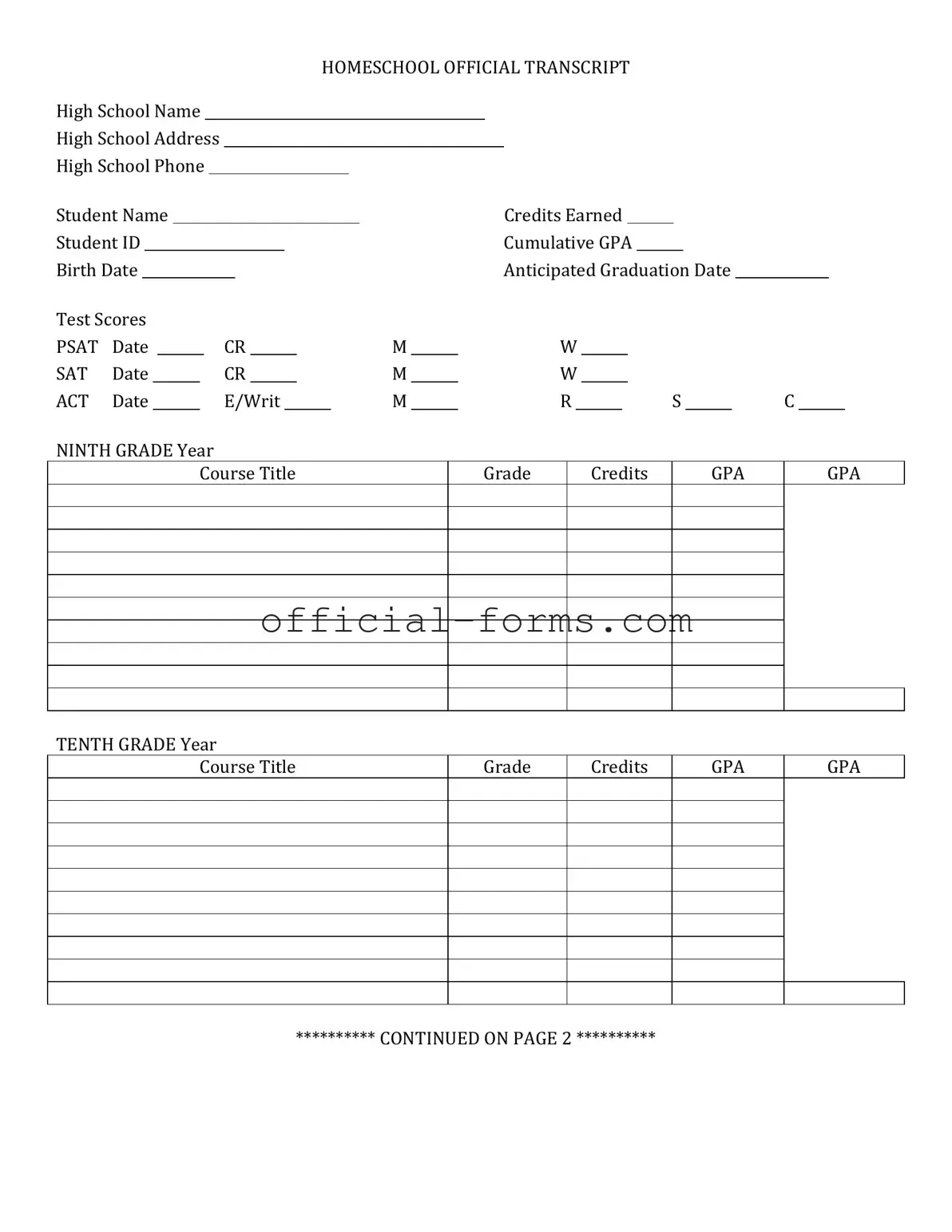Filling out a High School Transcript form can be straightforward, but many people make common mistakes that can delay processing or lead to confusion. One frequent error is providing incorrect personal information. Double-check names, addresses, and dates of birth. Even a small typo can cause significant issues.
Another mistake is failing to include all necessary academic records. Ensure that all courses taken, grades received, and credits earned are accurately listed. Omitting any classes can lead to an incomplete transcript, which may affect college applications.
Some individuals neglect to check for consistency in the information provided. For instance, the name on the transcript should match the name used in college applications. Discrepancies can raise red flags and complicate the admissions process.
People often forget to sign the form. A signature is typically required to validate the transcript. Without it, the form may be considered incomplete, resulting in delays.
Another common oversight is not following the specific instructions provided by the school or institution. Each school may have unique requirements for how the transcript should be formatted or submitted. Ignoring these guidelines can lead to unnecessary complications.
Some applicants submit the form without reviewing it thoroughly. Take a moment to read through all entries. This final check can catch errors that were missed during the initial filling out of the form.
Additionally, many people fail to keep a copy of the submitted transcript. Having a record of what was sent can be beneficial for future reference or in case any issues arise.
Another mistake involves not being aware of deadlines. It’s crucial to submit the transcript on time. Late submissions can hinder college applications and other important processes.
Finally, some individuals do not seek help when needed. If there is uncertainty about how to fill out the form correctly, reaching out for assistance can save time and prevent mistakes. Don’t hesitate to ask a school counselor or administrative staff for guidance.
